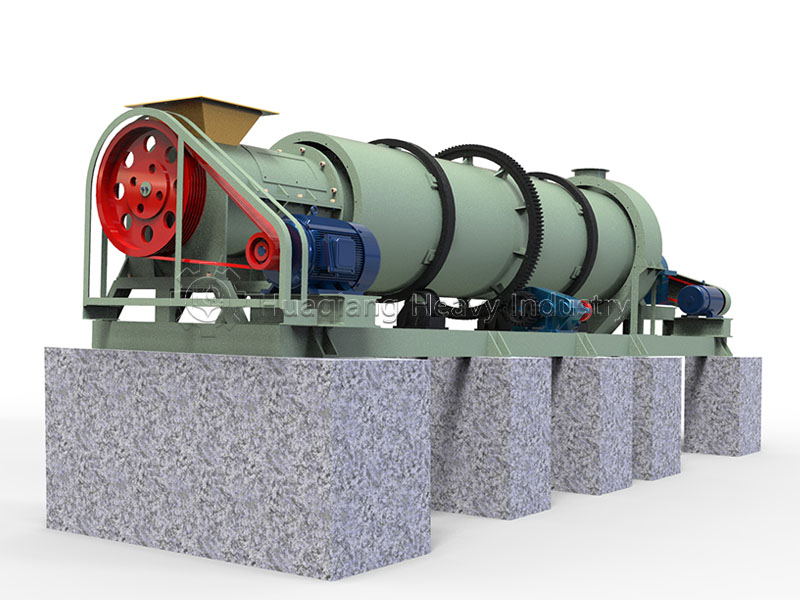The new type two in one organic fertilizer granulator features an integrated “pretreatment + granulation” design, combining two core processes into one. It is the preferred equipment for small and medium-sized organic fertilizer companies to improve efficiency and reduce costs.
The core structure of this new type two in one organic fertilizer granulator consists of two modules: a “mixing and conditioning chamber” and a “granulation and forming chamber,” with the two chambers seamlessly connected. During operation, crushed organic fertilizer raw materials such as straw and fermented manure first enter the upper mixing and conditioning chamber, which is equipped with anti-entanglement stirring paddles. Dual-shaft counter-rotating stirring uniformly mixes the raw materials with a small amount of binder (such as starch residue and humic acid). Furthermore, moisture monitoring and spraying devices installed on the chamber wall ensure real-time adjustment of the raw material moisture to 18%-22%, preventing subsequent mold sticking and loose pellets.

Pretreated raw materials automatically fall into the lower granulation and forming chamber through a built-in material guide channel, eliminating the need for manual transfer. The forming chamber utilizes a flat die granulation core structure, paired with a trapezoidal, non-slip roller and a deep, straight-hole flat die. This not only cuts long fibers in the raw material (preventing them from tangling with the roller) but also achieves low-temperature granulation through vertical extrusion. The formed granules are discharged directly from the outlet, achieving a particle size uniformity exceeding 90%, eliminating the need for secondary screening.
In addition, the new type two in one organic fertilizer granulator is specifically optimized for the characteristics of organic fertilizer raw materials: the mixing chamber agitator is made of a wear-resistant alloy to mitigate frictional losses in fibrous raw materials; the flat die in the granulation chamber can be quickly replaced to accommodate various particle sizes ranging from 2 to 5 mm; and the entire machine is equipped with a variable-frequency motor that adjusts the speed according to the raw material’s moisture and viscosity.


